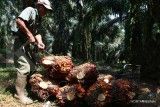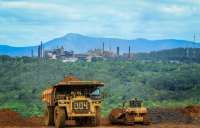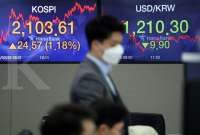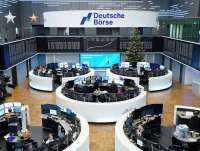JAKARTA. Indonesia is estimated to post higher economic growth in 2015 as the global economy improves, the World Bank says in its latest report on East Asia Pacific economies.
Titled Enhancing Competitiveness in an Uncertain World, the report, released on Monday, says growth will most likely surge to 5.6 percent in 2015, up from the 5.2 percent projected this year.
The projection is slightly lower than the 5.8 percent economic growth target set by the government for 2015.
Sudhir Shetty, the World Bank chief economist of East Asia and the Pacific region, said Indonesia was among the five large Southeast Asian economies, along with Malaysia, the Philippines, Thailand and Vietnam, that would see enhanced economic growth.
“[In ASEAN] we expect growth to slow gradually in 2014, rather than in 2013, but will then pick up in response to the recovery in rich economies on the back of increased export demand, particularly from the US and a little less from the eurozone and Japan,” he said during a media briefing on Monday.
Shetty said that increased rapid growth would also be facilitated by the countries’ economic adjustments and restructuring after a long period of low global interest rates, especially in the US.
In Indonesia’s case, growth drivers are expected to come from stronger investment and external demand.
The anticipated strengthening of exports depends on both a stabilization in the prices of key commodity export products — notably coal, crude and palm oil — and Indonesia’s ability to capitalize on global demand, according to the report.
If Indonesia is able to attract higher foreign investment and increase exports, especially in manufacturing, it will capitalize on strengthening global demand even more, it reads.
However, similar to its Southeast Asian peers, Indonesia is still largely dependent on commodity-related exports, such as mining and agriculture, as shown by the latest Central Statistics Agency (BPS) data.
During January to August, mineral fuels alone made up 15 percent of total non-oil and gas exports, followed by animal fats and animal and vegetable oils with 14.2 percent, and rubber and rubber-based products with 5.2 percent.
The priorities, Shetty said, were now on infrastructure and investment, particularly logistics, the investment climate and structural reforms.
Overall, growth in the East Asia Pacific, excluding China, was projected to rise to 5.3 percent in 2015 from 4.8 percent this year.
Economic growth in China, on the other hand, is estimated to suffer another slowdown, albeit gradually.
For Indonesia, whose largest trading partner is China, Shetty said the situation would not be too worrisome. “It will be a gradual decline, not a dramatic one,” he added. (Tassia Sipahutar)
/2014/09/24/782939264p.jpg)










